On May 11, 1981, reggae icon Bob Marley died due to a rare form of skin cancer that had gone tragically untreated for years.
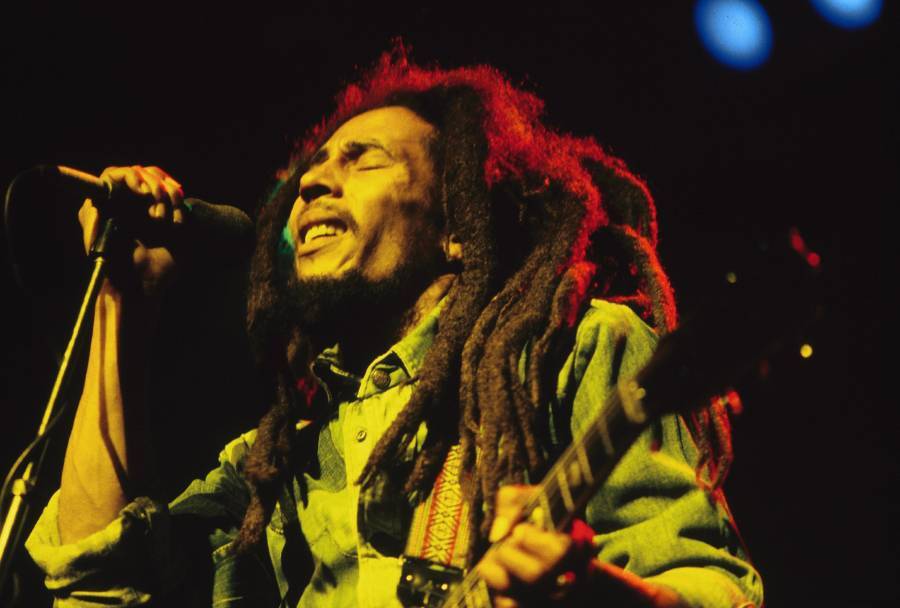
Mike Prior/Redferns/Getty ImagesBob Marley died the year after performing in the show pictured here at the Brighton Leisure Centre in the U.K. in 1980.
Mere days after Bob Marley played Madison Square Garden to thunderous applause in September 1980, the singer collapsed while jogging in Central Park. The subsequent diagnosis was bleak: aggressive melanoma on his toe had spread to his brain, liver, and lungs. Within a year, on May 11, 1981, Bob Marley died at the age of just 36.
Bob Marley left behind a wealth of iconic ballads like “Three Little Birds” and “One Love” that remain powerful for people around the world to this day. He also left behind many protest songs like “Get Up, Stand Up” and “Buffalo Soldier.” For years, his music had inspired countless people around the world, and when Bob Marley died suddenly, his fans were shocked and devastated.
However, Bob Marley’s death was tragically quite preventable. Had Marley noticed the cancerous spot on his toe earlier, it could have possibly been treated or cured. And even after Marley realized that the dark spot was more than just a soccer injury, he disregarded doctors’ advice and eventually pursued alternative but ineffective treatments. Unchecked, his cancer spread.
Cancer killed Bob Marley, but that hasn’t stopped conspiracy theories from taking root. Some believe that the CIA killed the singer with radioactive boots because of his support of certain Jamaican politicians. In fact, the CIA was behind an attempt on Marley’s life in 1976.
These theories aside, the answer to how Bob Marley died is a simple one: cancer. Bob Marley passed away in Miami en route home to Jamaica from Germany, where he’d been futilely pursuing alternative cancer treatments. His death left in 1981 a hole in the world of music that will never be filled.
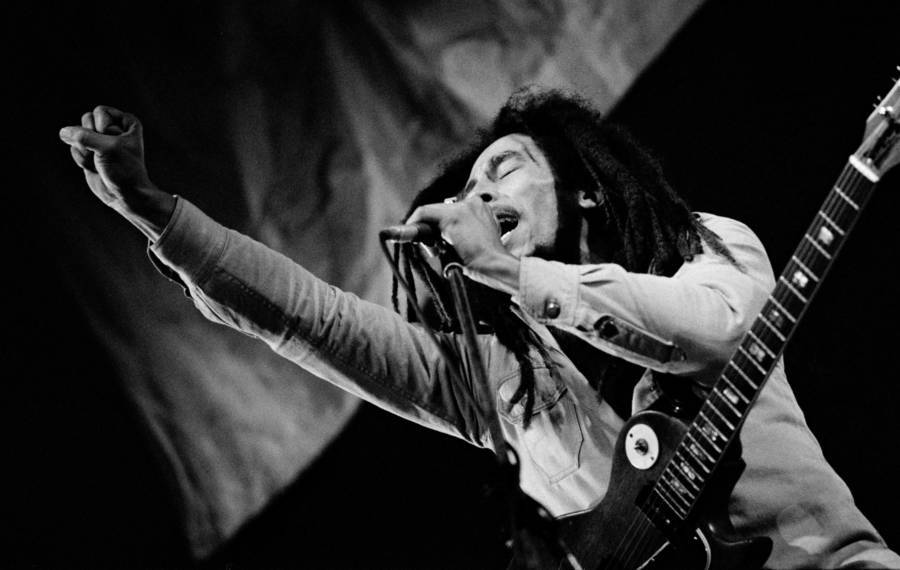
Getty ImagesIn 1977, Bob Marley was diagnosed with a form of skin cancer called acral lentiginous melanoma under his toenail — and in 1981, the disease left him dead.
Bob Marley Helps Bring Reggae To The World
Bob Marley was born to a Black Jamaican woman and white British man on Feb. 6, 1945, in St. Ann Parish, Jamaica. Teased for his biracial makeup as a child, he would grow determined to unify both races with his music as an adult — and become an anti-war icon after essentially single-handedly popularizing reggae.
Marley’s father, Norval Sinclair, largely remains an enigma, aside from his work as a ferro-cement engineer and service in Britain’s navy. Abandoning his 18-year-old wife Cedella Malcolm to fend for herself, he left his young son to be teased as “the German boy” or “the little yellow boy” before dying in 1955.
Marley and his mother moved to Kingston’s Trench Town neighborhood two years later. He became so passionate about music by 14 that he dropped out of school to pursue it as a career — and found like-minded locals to form The Wailers by the early 1960s. Their experimental ska and soul fusion soon popularized early reggae.
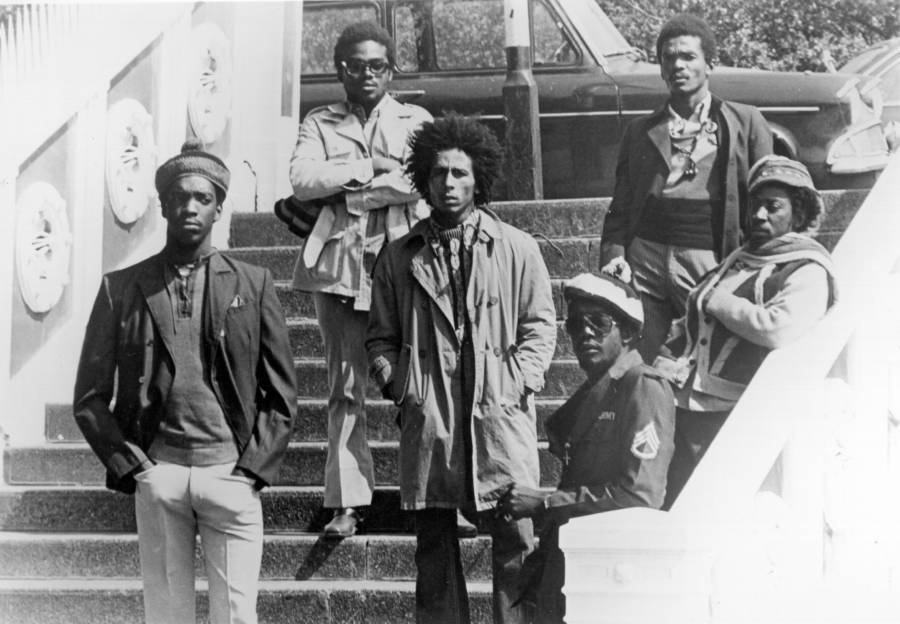
Michael Ochs Archives/Getty ImagesBob Marley (center) and The Wailers.
While the band found some international success in the early 1970s, Peter Tosh and Bunny Wailer left the group in 1974. It was at this point that Bob Marley took a firmer grasp on its direction, with Exodus in 1977, Kaya a year later, and Uprising in 1980 featuring the renowned classic songs Marley is known for today.
But both medical and political trouble was brewing for the singer, trouble that would eventually lead to Bob Marley’s death.
The Long Road To Bob Marley’s Death
Conspiracy theorists may pinpoint the beginning of the end for Bob Marley as Dec. 3, 1976. That day, Marley and his wife were attacked at their Jamaican home by gunmen shortly before Marley agreed to hold a free concert on Dec. 5, 1976, in Kingston called “Smile Jamaica.” The concert coincided with the country’s elections, a turbulent time fraught with aggression by desperate Jamaicans on both sides. Marley himself was loosely aligned with Michael Manley, the left-wing, democratic socialist candidate.
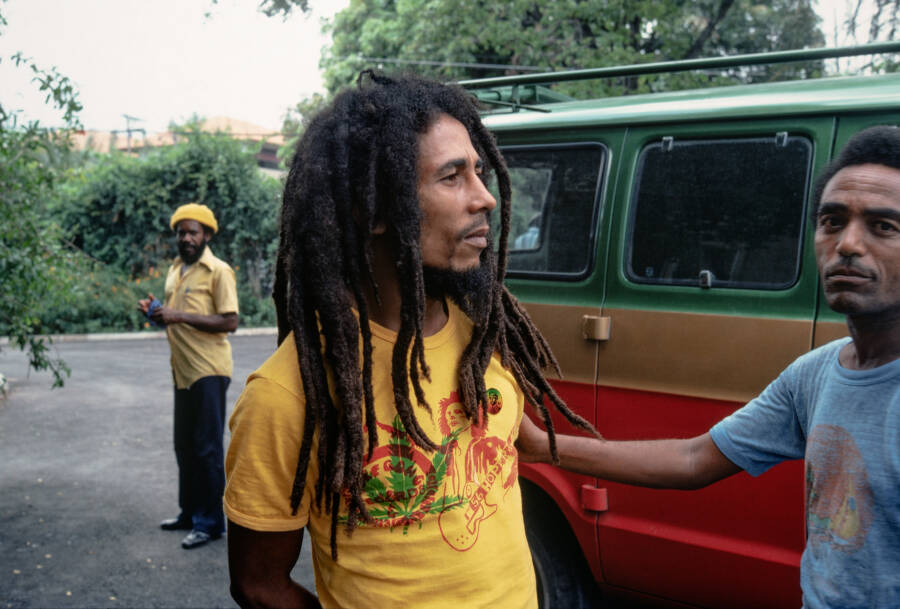
Charlie Steiner/Hwy 67 Revisited/Getty ImagesMarley outside his Kingston, Jamaica home at 56 Hope Road on July 9, 1970.
Conspiracy theorists believe that the CIA ordered this assassination attempt out of fear that Marley’s political positions would conflict with U.S. foreign policy. But something else was happening at the same time that more concretely led to Bob Marley’s death just a few years later.
In 1977, the singer noticed a worrisome dark spot under his right toenail. The first doctor to examine Marley believed it was merely a soccer injury and sent him on his way. But as the lesion grew worse, a second doctor ordered a biopsy. Then, doctors discovered that the lesion on Marley’s foot was actually melanoma. Specifically, Marley had a rare and aggressive kind of skin cancer called acral lentiginous melanoma.
Doctors told Marley he should have the toe amputated to stop the cancer’s spread. But Marley refused. The Tribune writes that Marley’s Rastafarian faith forbid the “cutting of the flesh” (though Marley did consent to have a surgical excision and skin graft of the area).
As such, Marley’s cancer was not treated aggressively. And it continued to spread throughout the years. Then, at the height of his fame in 1980, he collapsed while jogging in Central Park. Doctors found that Marley’s cancer had spread to his brain and that it was spreading to his vital organs.
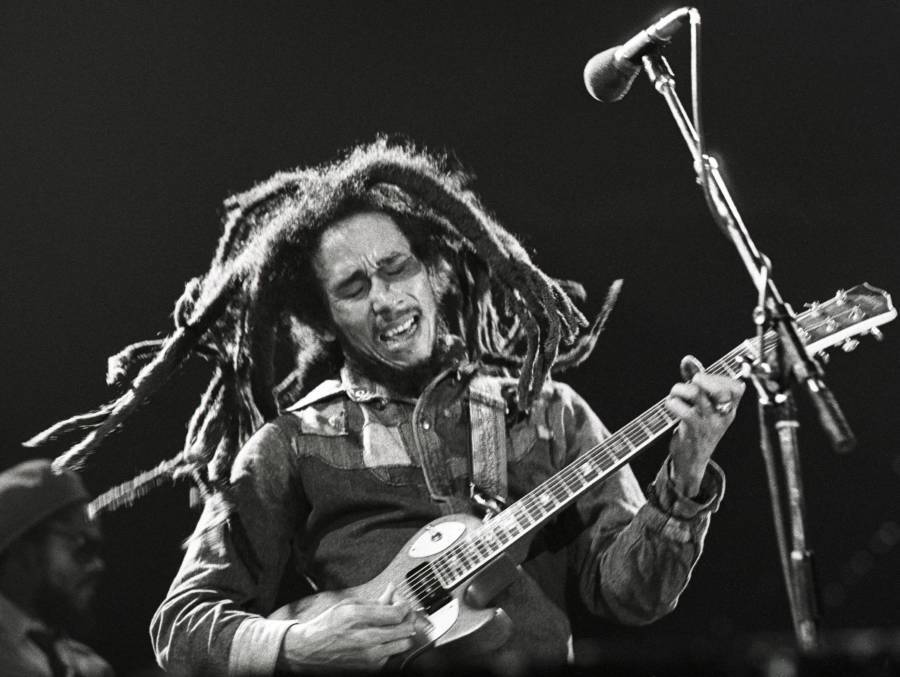
Getty ImagesBob Marley performs in the Netherlands, the year before he died tragically at the age of just 36.
His manager, Danny Sims, recalled a doctor stating that Marley had “more cancer in him than I’ve seen with a live human being.” The doctor gave Marley mere months to live and suggested that the singer “might as well go back out on the road and die there.”
And that’s more or less what Bob Marley did.
How Did Bob Marley Die?
After playing a final show on Sept. 23, 1980, in Pittsburgh, Bob Marley sought treatment in Miami, New York, and Germany. But with a distrust for “Western medicine” Marley underwent treatments which were ultimately ineffective. In Germany, Marley underwent a holistic cancer treatment that included exercise, vitamins, and ozone injections (this is prohibited by the FDA today).
These treatments proved futile. Eventually Marley was too frail to play to his beloved soccer or even to bear the weight of his dreadlocks, which his wife was forced to cut off in the final months of his life.
Bob Marley departed Germany for Jamaica in May 1981. When his health dramatically worsened, he deplaned in Florida and died at the University of Miami Hospital on May 11, 1981. Bob Marley’s last words to his son were, “Money can’t buy life.” He was buried in a chapel near the village he was born in on May 21. By then, The Tribune reports that he weighed just 82 pounds.
The Aftermath Of Bob Marley’s Death And Theories About What Caused It
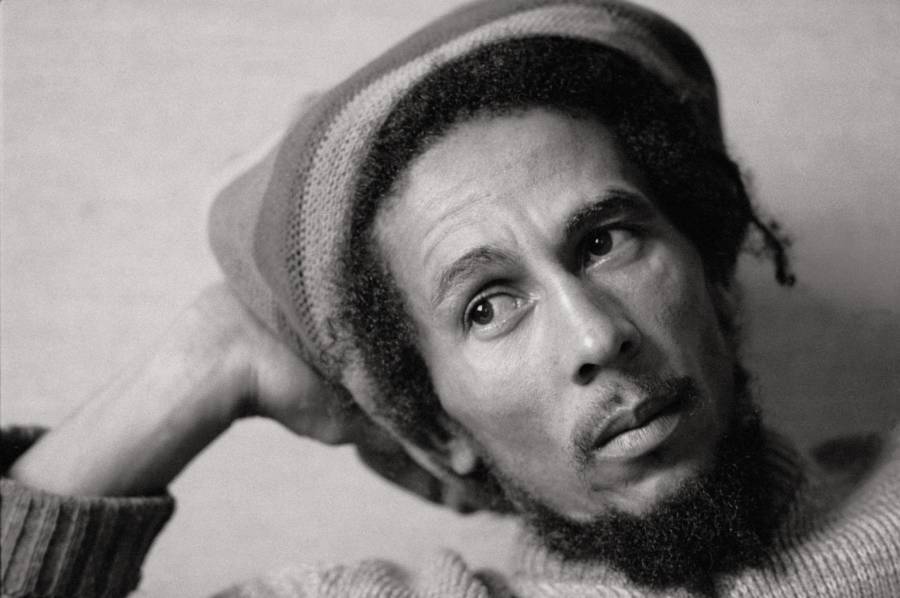
Sigfrid Casals/Cover/Getty ImagesBob Marley in 1980, when it was clear his cancer had metastasized.
Though some believe that the CIA ordered both the 1976 assassination attempt and arranged to give Marley a pair of radioactive boots which caused his cancer, these are merely conspiracy theories.
In the end, Bob Marley’s death was caused by one thing: untreated cancer. Had the singer been more aggressive about treating the melanoma on his toe, it would not have spread. Had he listened to doctors’ advice instead of seeking alternative treatments, perhaps Bob Marley would still be alive today.
Decades after Bob Marley’s death, he remains one of the most recognizable faces on Earth and his message of unity is more popular than ever. But Marley is also a symbol of something else: the importance of getting checked for skin cancer and, if it’s detected, pursuing aggressive treatments.
After learning about the death of Bob Marley, read the most fascinating facts about Bob Marley. Then, take a look at the best Bob Marley quotes and Bob Marley photos.





